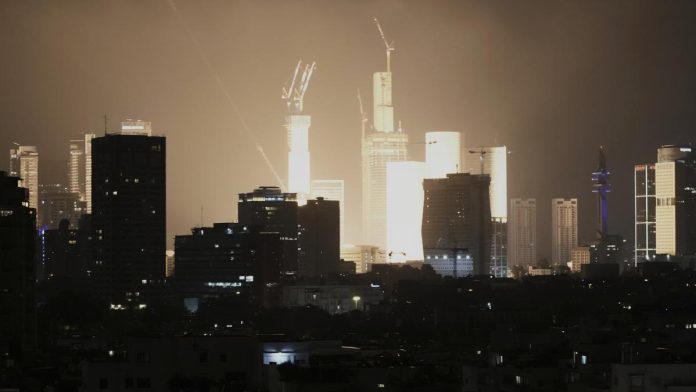The escalating conflict between Iran and Israel has now entered its fourth day, with relentless missile exchanges claiming hundreds of lives and causing widespread destruction across both nations. The overnight barrage, which wounded at least 100 additional civilians, represents Tehran’s continued retaliation against Israel’s preemptive strikes targeting Iran’s nuclear facilities and ballistic missile programs.
The human cost of this four-day conflict has been devastating. Iran has borne the heaviest casualties, with at least 224 people confirmed dead, including 70 women and children, and 1,277 others hospitalized according to official sources. The majority of Iranian casualties are civilians caught in the crossfire of Israeli airstrikes targeting military installations, government facilities, and energy infrastructure throughout the country. According to HRANA News Agency reports, the humanitarian situation continues to deteriorate rapidly. Official and local sources indicate that at least 93 people were killed or injured on June 14 alone, bringing the total number of Iranian casualties to over at least 863 people.
Israeli emergency services have responded to scenes of chaos and destruction as Iranian missiles continue to find their targets in populated areas. The latest attacks on central Israel struck residential buildings in Tel Aviv, Petah Tikva, and Bnei Brak, while Haifa’s industrial zone erupted in flames following direct hits. Israeli casualties now stand at 18 to 20 dead with over 390 wounded, as rescue teams work through debris and collapsed structures across multiple cities. The conflict has claimed several high-profile military casualties that underscore its intensity. Israeli strikes on Sunday killed Mohammad Kazemi, the intelligence chief of Iran’s Revolutionary Guards, along with two other senior officers, according to Iran’s state news agency IRNA. Earlier, IRGC commander Hossein Salami was killed in Israel’s initial Friday attacks and has since been replaced by General Ahmed Vahidi.
Israel’s military campaign has systematically targeted Iran’s military infrastructure, with fighter jets striking command centers belonging to the Quds Force, the wing of the Iranian Revolutionary Guard Corps responsible for coordinating with proxy groups across West Asia including Hezbollah and Hamas. The Israel Defense Forces released footage showing strikes on 10 sites in Tehran that it identified as Quds and military targets.
The material damage on both sides reflects the conflict’s escalating nature. In Israel, dozens of residential buildings have been destroyed or damaged across Tel Aviv, Bat Yam, Haifa, and Ramat Gan, with widespread fires and power outages affecting daily life. Israeli airspace, including the main international airport, has remained closed for three consecutive days, effectively isolating the country from international travel.
Iran has suffered extensive damage to its military and government facilities, with Israeli strikes creating major blazes at oil depots near Tehran and targeting the Defense Ministry, missile launch sites, and energy infrastructure including fuel tanks. These attacks on Iran’s energy sector have raised concerns about potential broader impacts on the country’s economy and global energy markets. Both nations continue to threaten further escalation despite mounting international pressure for restraint. International efforts to broker a ceasefire have thus far proven unsuccessful, as the conflict that began on Friday shows no signs of abating. The risk of broader regional escalation remains high as world leaders at the G7 meeting express growing alarm.








































